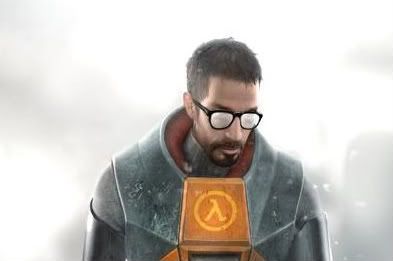Ten years. A decades worth of a silent protagonist, armed with a crowbar and more than enough wits to outmaneuver Special Forces and defeat two alien invasions. Technically one-and-a-half, because the fight with the Combines not done yet.
Ten years ago we saw a renewed love-affair with the story-driven shooter.
November 19th, 1998. The release of Half-Life.
Ten years that proved, at the dawn of internet-based multiplayer, that single player games were not dead. In a time when the internet was rising, and high-speed connections were becoming the norm, the PC gaming industry always seemed to ask a question of any game that came out: How good is the multiplayer?
Half-Life showed the world that the story was important. Half-Life showed that the characters were important. Half-Life showed that the game was important.
Since that day, the genre has been one of the tops in gaming. The now-defunct PC Accelerator magazine rated Half-Life an 11. Out of 10. Yes, the story can seem
odd at times. Plot holes exist throughout the series. And questions are still unanswered. And just what the hell is a Resonance Cascade? But the moment you started it, you didnt really care what it was. You just knew it was time to get the Hell out of Black Mesa.
And then the wait. Six long years before Dr. Freeman would surface again. And what an entrance it was. Entering City 17 on the inbound train properly gave you déjà vu, but there was no security guard named Barney to free you. Oh wait, there was. Everything was the same, and yet different. City 17 was our new playground.
The world seemed fresher. The fights
more exciting. The physics more
wait
we have real physics now? Cool. And Ill admit that the Source isnt the most powerful game engine out there. But its versatile. Look at the feel of Half-Life 2, then compare it to Portal, Team Fortress 2, and Left 4 Dead. All the same engine. All different.
As a company, Valve staked their entire future on a theoretical physicist from M.I.T. in 1988. It was a gamble, but it worked.
So happy birthday, Gordon. Heres hoping we get to see how youve grown up in another ten years.
